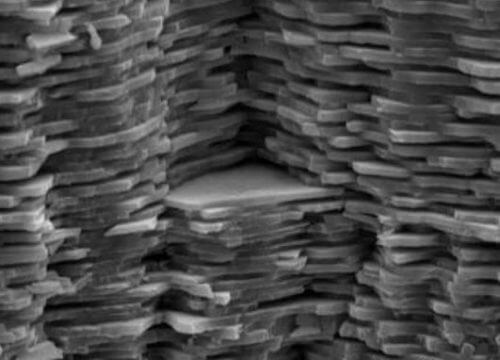The substance called mother of pearl is 3,000 times stronger than ceramic, and is composed of calcium carbonate in an ingenious structure, arranged in tiny segments in the nano range. These segments give the structure its durability and are separated from each other by means of an elastic biopolymeric layer, which gives the material its characteristic flexibility and durability.
By: Dafna Haim Langford

You surely know the colorful and glowing layer that covers the inside of the oyster? Have you wondered why she is there other than the design of the shellfish house she used to live in?
This coating is called mother of pearl (or der) and is found in the shells of different types of molluscs, and is responsible for the strength and durability of the shell. The substance called mother of pearl is 3,000 times stronger than ceramic, and is composed of calcium carbonate in an ingenious structure, arranged in tiny segments in the nano range. These segments give the structure its durability and are separated from each other by means of an elastic biopolymeric layer, which gives the material its characteristic flexibility and durability.
In a recent study published in Nature Communications, scientists from McGill University in Canada describe how mimicking the mother-of-pearl structure led to the development of a stronger glass.
The secret behind the strength of the mother of pearl structure is in its weakness. In nature, durable and strong materials, such as teeth for example, consist of very strong elements, with a strong structure but with weak points between them. The ability to direct the fracture, using weak launch points, is critical to the material's performance, and this situation is only possible when the interfaces are weaker than the building blocks themselves.
In past attempts, they tried to imitate the structure of the mother of pearl by connecting strong microstructures, by weak launching points. The scientists from McGill University decided to try the opposite: instead of starting from the building blocks, they created weak water points in a whole glass unit, using the knowledge of creating controlled "micro" cracks using a UV laser.
By creating "micro" cracks in the glass, the scientists defined in advance the direction of the fracture that will form in the glass under pressure. They also found that the configuration of the cracks also has significance in imparting strength, and the creation of micro-cracks that are not straight increased the strength of the glass 100 times.
Although creating micro-cracks in glass seems counter-intuitive as part of an effort to strengthen it, the cracks allow the glass to warp, preventing the crack from progressing to breaking point. In this study, the scientists proved that glass and other materials can be strengthened by creating patterns of tiny cracks, and the next step is to strengthen other materials not by adding material, but by creating weak points.
We have previously seen the weakness for strengthening in the structure of the spider web network (not in the strength of the fiber but in the structure of the network, which provides resistance through designated breaking points) as well as in the hexagonal structure in the turtle's shell, lowering the amount of material at the launch points which created an increase in the strength of the shell and was a source of inspiration for car frames and even washing machines.

One response
This reminds me of the joke about a large airline company that tried to develop a new plane, but for some reason, in almost every test flight at some point the wings were suddenly torn from the point of connection with the fuselage and the plane crashed.
After they despaired of finding a solution, they decided to publish an ad in which they offered a reward of one million dollars to anyone who would find a solution to the problem. After several weeks in which they tried various solutions that were offered to them and none of them succeeded, an Israeli engineer approached them and suggested: "Listen, punch holes across the wing at the point where the wings detach from the body, this will solve your problem."
The solution sounded illogical to them but out of desperation they decided to try his suggestion anyway, surprisingly from that moment on the wings stopped falling!
They returned surprised to the same engineer and asked him "How did you know that the holes in the wings would solve the problem?", he answered them: "Very simply, here in Israel the toilet paper never tears where the holes are, so I imagined it would work here too."
: )